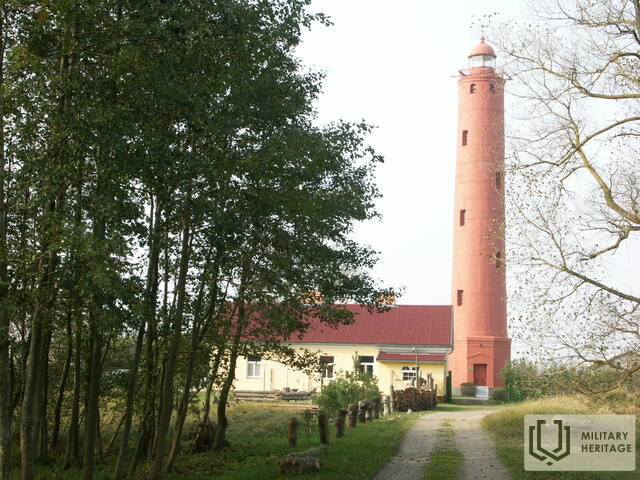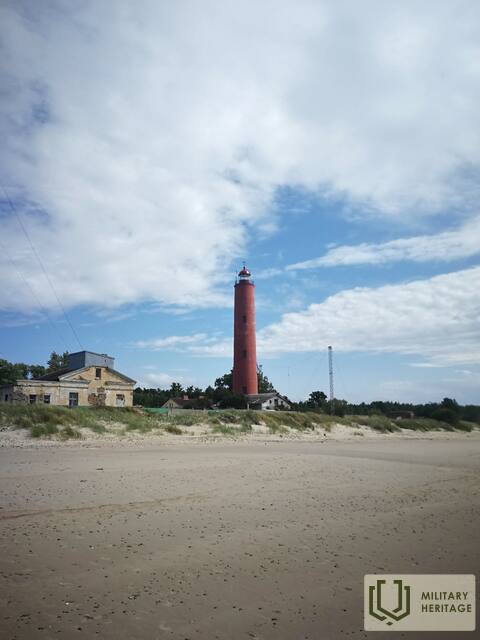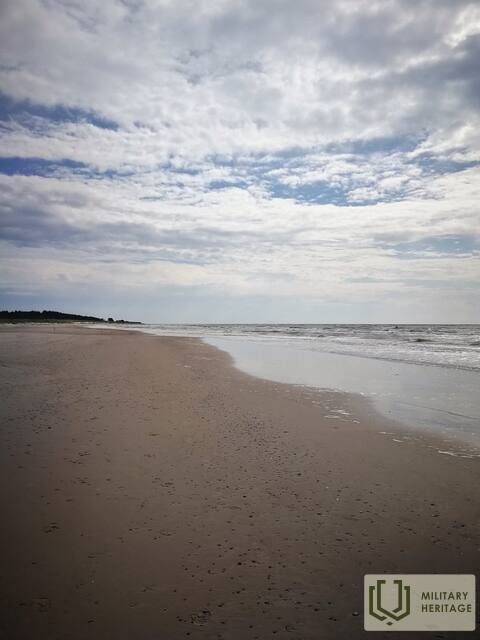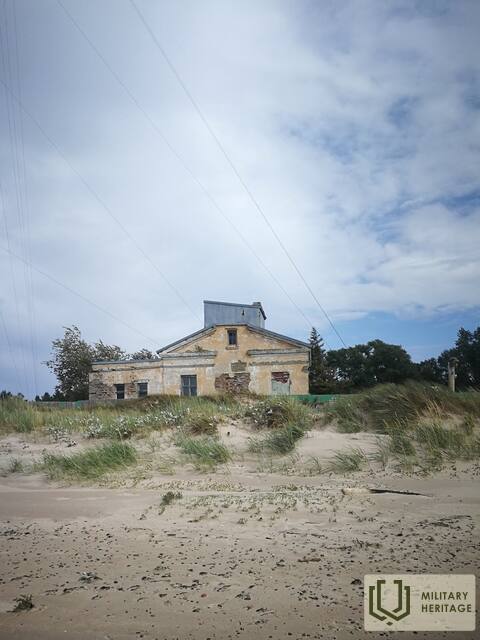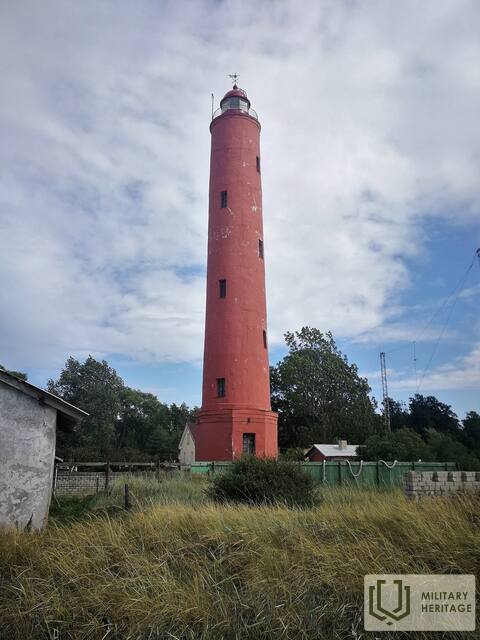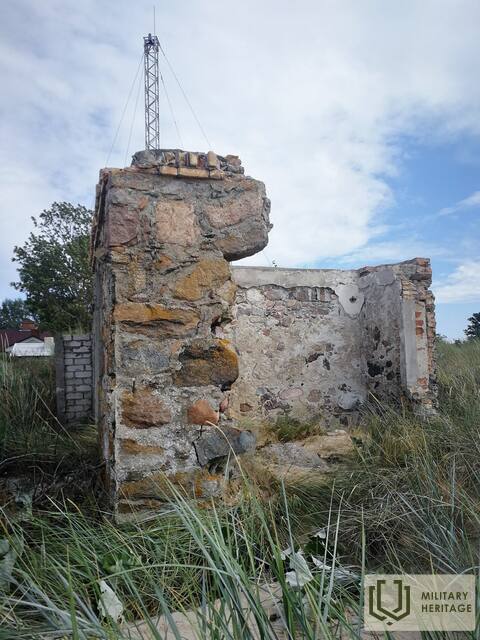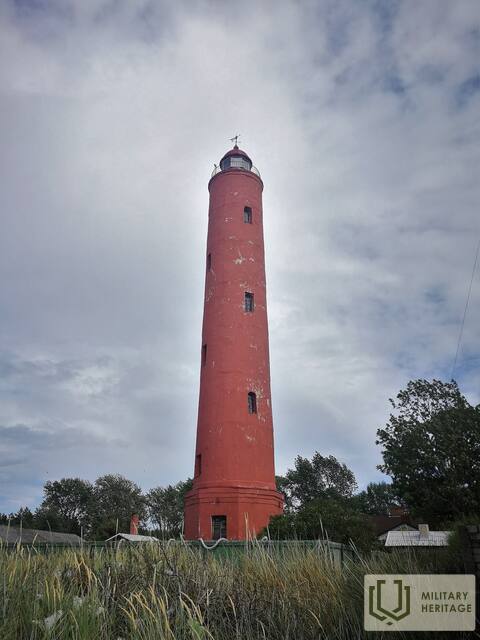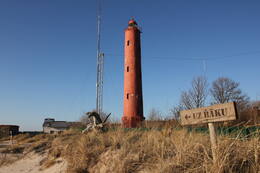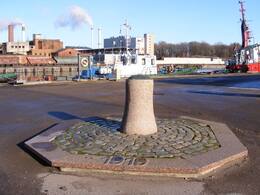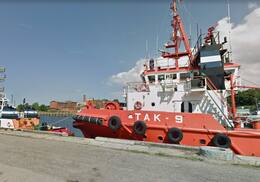Akmeņrago švyturys ir seklumėlė – viena didžiausių laivų kapinių Baltijos jūroje
Būtent Akmensrago švyturio rajone 1923 m. sausio 13 d. tragiškai užplaukė ir sudužo garlaivis „Saratov“ , kuriuo, įkūrus nepriklausomą Latvijos valstybę, prieglobstį rado K. Ulmanio vadovaujama laikinoji vyriausybė.
XIX ir XX amžių karo ir karinių konfliktų atvejais švyturiai buvo svarbūs kariniai ir strateginiai objektai, kuriuos priešas bandė sunaikinti, norėdamas sutrikdyti ar sutrukdyti priešo laivų judėjimą pakrančių vandenyse. Panašiai nutiko ir su Akmensrago švyturiu. Siekiant apsaugoti laivus nuo čia esančių klastingų seklumų, 1879 m. čia buvo įžiebta pirmoji navigacijos šviesa, o po 10 metų čia buvo pastatytas pirmasis 28 metrų aukščio medinis švyturys. Jis buvo sunaikintas per Pirmąjį pasaulinį karą, 1921 m. pastatytas naujas švyturys, kurio šviesa yra 37,5 metro aukštyje virš jūros lygio. Šis švyturys veikia ir šiandien.
Vietos žvejai ir ekspertai taip pat teigia, kad čia, netoli Akmensrago, yra viena didžiausių laivų kapinių Baltijos jūroje. Būtent Akmensrago švyturio apylinkėse 1923 m. sausio 13 d. tragiškai užplaukė ir sudužo garlaivis „Saratov“ , kuriuo, kai buvo įkurta nepriklausoma Latvijos valstybė, prieglobstį rado laikinoji vyriausybė su K. Ulmaniu prie vairo. Tiesa, avarijos metu laivas plaukė su raudona vėliava, nes buvo perduotas SSRS. Jis plaukė su kroviniu iš Rygos į Didžiąją Britaniją, o pakeliui buvo suplanuotas sustojimas Liepojoje. Avarijos metu snigo, ir, matyt, dėl blogo matomumo ar navigacijos klaidos laivas užplaukė ant seklumos, kur gylis tebuvo 5 metrai.... Laivo vairininkas grįžęs į SSRS buvo nušautas už savo klaidos, tačiau laivas, trukdęs žvejams ir navigacijai, 1930-aisiais buvo susprogdintas, o kai kurios jo dalys išgabentos į Liepoją perlydyti.... Kažkas liko Akmensrago seklumai, ji neliko be savo dalies.
Normundas Smaļinskis, 2009 10 27.
www.diggers.lv, www.nekton.lv
Susijusi laiko juosta
Susijusios temos
Susijusios vietos
Akmeņrago švyturys ir „Saratovo“ likimas
Akmeņrago švyturys yra Sakos valsčiuje, 10 kilometrų į pietvakarius nuo Paviluostos. Į švyturio viršūnę galima patekti spiraliniais laiptais, iš jos atsiveria vaizdas į jūrą ir aplinkinius miškus. Dabartinis 37 metrų aukščio švyturio bokštas buvo pastatytas 1921 m., o ankstesnis švyturys buvo sunaikintas per Pirmąjį pasaulinį karą.
Akmeņrago švyturys išsiskiria iš kitų Latvijos švyturių, nes yra vienoje pavojingiausių laivybai vietų visoje Baltijos jūros pakrantėje. Švyturio signalinis spindulys žymi uolėtą krantą, kuris šiaurės vakarų kryptimi tęsiasi maždaug dvi jūrmyles arba 3,7 kilometro į jūrą. Kranto gylis yra kiek daugiau nei du metrai. Švyturio vieta nepakito, tačiau pakrantė bėgant metams tolsta. Nors navigacijos šviesa čia yra nuo 1879 m., Akmeņrage įvyko keletas laivų avarijų. Žymiausia įvyko 1923 m. rugsėjį, kai į seklumą atsitrenkė Latvijos garlaivis „Saratow“. 1919 m. Saratovas trumpai buvo Latvijos laikinosios vyriausybės būstinė. Akmeņrage anksčiau buvo pasienio apsaugos postas, čia galima apžiūrėti sovietų armijos pastatus.
Laivo „Saratov“ prieplauka Liepojoje
„Saratov“ prieplauka yra Liepojoje, Senojoje uoste, 59, netoli laivų prieplaukos.
Pastatytas 1888 m. Kopenhagoje laivų statyklos „Buvmeistar & Wain“ pavadinimu „Leopold II“, 1911 m. jį įsigijo akcinė bendrovė „Russian North-West Shipping“ ir pervadino į „Saratov“, o laivo kapitonu tapo latvis Aleksandras Remessas.
1915 m. gegužę, kai Liepoją okupavo vokiečių kariuomenė, laivas „Saratovas“ uoste buvo apgadintas.
1919 m. sausio 10 d. garlaivį „Saratov“ perėmė Latvijos laikinoji vyriausybė. Nuo 1919 m. balandžio iki liepos mėn., po „balandžio 16 d. perversmo“, K. Ulmanio vadovaujama laikinoji vyriausybė buvo „Saratov“ laive ir buvo priversta slėptis sąjungininkų laivyno globoje.
1919 m. liepos 8 d., laikinajai K. Ulmanio vyriausybei perdavus Rygą, garlaiviai buvo naudojami susisiekimui tarp Rygos, Ventspilio ir Liepojos.
Pagal 1920 m. rugpjūčio 11 d. Latvijos ir Sovietų Rusijos taikos sutarties sąlygas garlaivis „Saratovas“ turėjo būti grąžintas Sovietų pusei. 1923 m. sausio 2 d. garlaivis buvo perduotas Sovietų Rusijos atstovui. 1923 m. sausio 15 d. garlaivis „Saratovas“ sudužo prie Akmenrago krantų.
1936 m. Latvijos jūrų departamentas pardavė nuolaužas įmonei, kuri jas sutvarkė ir perdavė Liepojos audinių fabrikui.
Tikroji laivo „Saratov“ švartavimosi vieta
Tikroji laivo „Saratov“ prieplauka yra Liepojoje, Vecā ostmalā 59, netoli laivų prieplaukų, tačiau memorialas yra visai šalia Liepojos specialiosios ekonominės zonos.
Pastatytas 1888 m. Kopenhagoje, laivų statykloje „Buvmeistar & Wain“, pavadinimu „Leopold II“. 1911 m. jį įsigijo Rusijos šiaurės vakarų laivybos kompanija ir pervadino į „Saratov“, o laivo kapitonu tapo latvis Aleksandras Remessas.
1915 m. gegužę, kai Liepoją okupavo vokiečių kariuomenė, laivas „Saratov“ buvo uoste apgadintas.
1919 m. sausio 10 d. garlaivis „Saratov“ buvo perimtas Latvijos laikinosios vyriausybės reikmėms. Nuo 1919 m. balandžio iki 1919 m. liepos mėn. K. Ulmanio vadovaujama laikinoji vyriausybė po „Balandžio 16-osios perversmo“ buvo laive „Saratov“, kuris buvo priverstas ieškoti prieglobsčio sąjungininkų laivyno globoje.
1919 m. liepos 8 d., atvedus į Rygą K. Ulmanio laikinąją vyriausybę, garlaivis buvo naudojamas eismui tarp Rygos, Ventspilio ir Liepojos.
Pagal 1920 m. rugpjūčio 11 d. Latvijos ir Sovietų Rusijos taikos sutarties sąlygas garlaivis „Saratov“ turėjo būti grąžintas sovietų pusei. 1923 m. sausio 2 d. garlaivis buvo perduotas Sovietų Rusijos atstovui. 1923 m. sausio 15 d. garlaivis „Saratov“ žuvo netoli Akmeņrago.
1936 m. Latvijos jūrų departamentas pardavė laivo nuolaužas įmonei, kuri jas iškėlė ir perdavė metalo laužui Liepojos vielos gamyklai.




